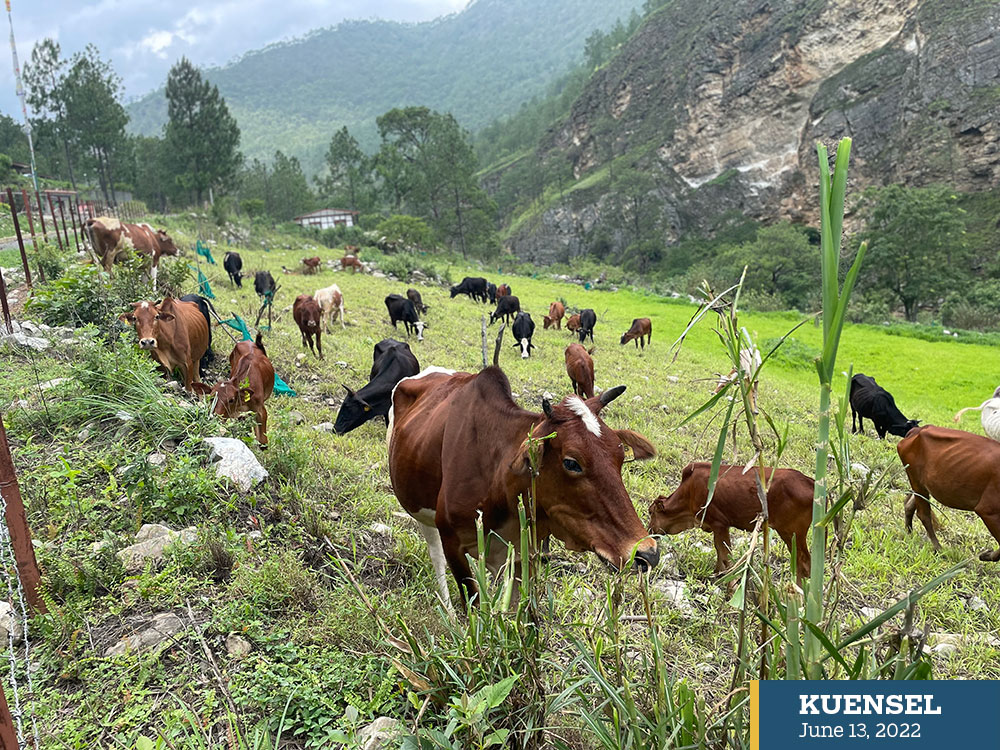Tshering Namgyal | Lhuentse
Since its establishment in 2017, the Native Poultry and Heifer Production Centre (NPHC) in Sertsham, Lhuentse, supplied about 700 pullets, 18 heifers and 21 breeding bulls.
Officials at the centre said the demand for native pullets and heifers of thrabam (progeny of Nublang) increased over the years and they are facing difficulty to meet the demand.
A senior livestock extension supervisor, Sangay Rinchen, said they could not supply 350 three to four-month-old pullets and four heifers for this year.
“We’ve received a demand for 12 heifers but only had eight in stock,” he said.
The centre produces about 800 pullets a year in four batches seasonally, but the demand exceeds 1,000 a year.
Officials said they aspire to increase the stock to 1,000 initially and gradually to 2,000 annually through both natural and artificial hatchery.
They also said they have a capacity to produce around 12 to 13 heifers in a year, which would just meet the demand.
Officials said the demand for thrabam were mainly from remote villages to produce jatsha and jatsham as their progenies.
Meanwhile, the centre was established to commemorate the birth of His Royal Highness The Gyalsey.
With the once popular native cows and poultry birds becoming rare in the country with most farmers owning hybrid cattle and improved birds, the centre focuses on conservation efforts to make pure line native poultry and dairy breeds available for supply.
The centre has supplied 18 heifers and breeding bulls to farmers of Lhuentse, Mongar, Pemagatshel and Trashiyangtse.
A thrabam is sold between Nu 8,000 and Nu 9,000 depending on its weight. A breeding bull is supplied at subsidised fixed rate of Nu 5,000, and a pullet cost Nu 150.
Expanding over the area of more than 95 acres, the centre has about103 thrabam including 21 milking and nine breeding bulls and parent stock of 850 native poultry birds with the varieties of Belochem, native black and seim (red dark).
Native poultry birds were brought from all over the country every year, and officials said they managed to get parent stock of five out of 10 varieties believed to be extinct over the years.
The centre, which earlier had a target of producing 30 sex-sorted heifer or crossbred thrabam annually has now done away to fulfill its mandate of producing pure line thrabams.
Livestock officials said the number of thrabams and native birds known for physical strength and disease resistance have dropped by 40 percent in the last decade according to the annual livestock census survey as farmers have shifted to improved varieties mainly for economic reasons.


